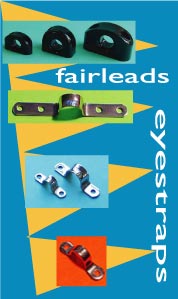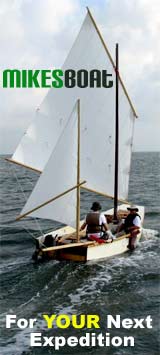I promised Dave Gentry, boat builder and skin-on-frame construction evangelist, that I would write an article on my experience at skin-on-frame boat construction. That was some time ago. Now I find that Dave has published an article on his skin-on-frame Whitehall row boat, the Shenandoah, in the April 2016 MAIB, so I am getting around to the promised article.
Although I did the work for a Canoeing Merit Badge many a summer camp ago in the Boy Scouts, my boating experience stayed quite limited into late middle age. The most consistent boating would have to be the once every few years, day trip, canoe rental on a nearby river, where ever in the country we were living at the time (West, Deep South, Mid-West), usually with a church outing or with friends from work. I always kept my eye out for a used canoe, but never managed to close the deal. I just had other hobbies.
Ten or so years ago, a friend got hooked on a website for shanty boat enthusiasts. This led to Jim Michalak’s boat building electronic newsletter, and from there to Phil Bolger. I was intrigued. My buddy, Andy, and I eventually happened into both Jim and Phil’s books, and then into the fanatics that surround the Cult of the Puddle Duck Racer. Andy and I decided that we had to build a couple of PD Racers. In the middle of Indiana. Not exactly sailboat central. Where to get help? (Other than long term counseling.) The PDR web presence located a nearby Hossier in the PDR world, Dave Gray, none other than the Polysail Guru! Dave helped us both get our hulls done (as in “did about half the work”, and his better half, Dixie, put up with way too much of Andy and I, but that’s another story). Andy used his PDR as a rowboat, and eventually moved away to Illinois for work. Dave and I got together to sail a few times, and Dave put on PDR events, before he too moved away to Florida to be near grandkids. I still have my Puddle Duck, on a trailer, but got the urge to build another boat after a while.
This led to a subscription to MAIB, pulling the occasional copy of Small Craft Advisor, Wooden Boat, or Good Old Boat off the news stand, endless hours on the net reading Duckworks and other sites, and, of course, drooling over every boat that showed up at whichever messabout I was attending. My interest changed constantly, but eventually settled on skin-on-frame boats three or four years ago.
Why skin-on-frame construction? Light weight, strength, beauty, all come to mind, but it finally all came down to cost. There just doesn’t seem to be any other way to get so much boat for so little money. The designs I settled onto were by Dave Gentry at Gentry Custom Boats (www.gentrycustomboats.com) . Before you object to resistance to damage problems, go and Google the dozens of videos of people beating on their skin boats with all sorts of hammers and other implements of destruction, crashing them into rocks, etc. I won’t defend my choice further than that, but suffice to say, I am satisfied my boat might just outlast me.
Gentry’s plans and instructions for many of his boats allow for both ‘traditional’ construction, with bent ribs, and ‘non-traditional’ construction, with the stringers and gunwales bent around cut plywood frames. I decided early on to use the plywood frame method. But what boat to build? Dave offers plans for canoes, kayaks, rowing boats (including a dory), sailing skiff or pram, paddleboards or sit-on-tops, even an outrigger sailing canoe a’ la South Pacific. With Dave’s consultation by email, I bought the plans and instruction book for Chuckanut 15, a kayak of sorts. I say ‘of sorts’ because the 15 foot boat has an 8 foot long cockpit opening. You sit flat and move with a double paddle. I am reminded of a 19th century decked canoe, in the style of the Rob Roy, or the designs of Percy Blandford in the 20th century.
Skin-on-frame builds can go very fast, as in under a weekend from beginning to boat in the water. I took my time, as in started in the spring of 2014 and in the water in late fall 2015. How do you stretch a week end, or couple of week project into a year and a half? You do it by not having much money or boat building material available, but build it I did.
For the price of entry, Dave Gentry sends you an illustrated book of instructions and sheet of full size frame and stem tracings. There is no lofting. Transfer the tracings to your plywood, and cut them out. To avoid issues with strength caused by voids in the plywood, Andy Linn suggested I use marine plywood. I did so, but used the cheapest marine ply I could get. My boat used about half a sheet.
Now it is confession time. I was nervous about this. Now no complaint about Dave’s instruction book, but wanted more information (or was that hand holding?). Dave answered every email, and gave great support, but did I mention that even with Dave Gray helping me build that first PD Racer, I bought both Jim Michalak’s AND Dynamite Payson’s boat building books? I contacted Jeff Horton at Kudzucraft, and then bought his “More Fuselage Frame Boats” book (www.kudzucraft.com/books/). Both Dave and Jeff played a big part in me getting this boat built. Thanks, guys.
It was spring 2015 before I was able to get around to affording to visit a small, local lumber yard and saw mill about 40 miles away. They had Western Red Cedar available (not common in the Mid-West) and could cut it to dimensions. Better yet, they had it in sixteen foot lengths, so I wouldn’t have to scarf to get long enough stringers and gunwales. Gunwales are 1 ½” X ¾”, and stringers 1” X ¾”. The gunwales require a permanent bend through that 1 ½” dimension, which requires a long soak in water, and hanging to dry with a weight or weights. I bought two 10 foot sections of flexible plastic drain pipe from a big box hardware store and soaked the gunwales a week. I clamped the two gunwales together, and suspended them between two sawhorses with a 5 gallon bucket of water and other weights hung in the middle to give me sufficient bend in the drying cedar.
There are several options for fastening the parts together into a boat. Epoxy or other marine grade glue, corrosion resistant fasteners, or a combination of all of the above is probably the boaty way to do it, but there is another. Innuit builders of kayaks and umiaks used cordage made of animal sinew to lash their boats together. I bought artificial sinew at the local Hobby Lobby. The decision reflects both tradition, and that lashing the boat together makes for a boat that is both strong and flexible. Artificial sinew has an advertised strength of at least 70 pounds, wrapped six to eight times around, gives you “the wood is going to break before the lashings” kind of strength. The big issue in the end however was that lashing is fast, easy to do, and cheap (are you seeing a pattern?). I pulled the boat together with plastic zip ties and Spanish windlass, as can be seen in the pictures. (I’m hoping my poorly lit color digitals reproduce well in black and white.) I even lashed the stem and stern to the keel (which is the same cross section as the stringers, though shorter), before lashing the gunwales and stringers to the stem and stern pieces. Twisting the boat into a shape I liked took about a week of frustration, but it eventually relaxed into good shape, which is when I began to do my lashings in earnest. As kayak builder George Dyson has been quoted as saying something like, “The wonder isn’t that man learned to lash things together, it’s that he ever stopped.”
Speaking of George Dyson, he was also the source of my polyester fabric to cover my boat. Dyson can be contacted by email at: GDyson@gmail.com. He will send you a product and price list.
 |
Stem lashings. |
 |
Stern lashings. |
 |
Frame complete and ready to cover. |
 |
Second frame, deck beam, and cockpit carlins. |
 |
Hull covered. |
 |
Covering deck. |
 |
Ready to go. |
 |
Splash! |
Covering the boat is what probably intimidates most first time builders the most. After doing it, I can’t figure out why. I followed Dave’s instructions, and they worked. The big trick is to ‘cut’ the fabric with a hot knife. In effect you melt your way through the synthetic fabric. I got my hot knife, in reality a soldering iron with a flat tip, for under $20 at my favorite home improvement store. There was some easy hand stitching with my artificial sinew at the bow and stern. Everything else was stretching out wrinkles and stapling. It went smoothly (pun intended)! I used an old steam iron, without water, and on low temperature, to shrink and tighten the fabric.
Once the fabric was on the boat, it was time for the application of a less than high tech chemical to waterproof and give abrasion resistance. The bottom and lower stringers were given a skim coat of PL Premium construction adhesive. My squeegee was an old credit card I needed to destroy anyway. After a couple of days to cure, I ironed it once more, and then painted the boat with oil based Rustoleum. Yes, you don’t need high tech fabric coatings or marine grade products here. Just paint it. A cedar rub strip to cover the staple line on the gunwales and protect the boat, and cedar cockpit coaming finished it up. Small stainless screws to attach the rub rail and coaming are the only mechanical fasteners on the boat. A loop of line through tight holes in the gunwales near the bow and stern make great grab handles, and a place to tie bow and stern painters. I cut up pool noodles, and stuffed them into the bow and stern spaces, before covering, to give some marginal extra floatation.
I got in one test on the water, before the local lake froze up. The marina had pulled the docks and closed up, but the ramp is public. Only a few die hard fishermen were around. First time in the water, the boat seems stable and handy. Only paddled for a couple of hours this first time out. The plans call for 39 pounds for weight, but my boat scales out at 44. I’ll take that on my first try. Looking forward to a bunch of adventure this coming year.
Plans at www.gentrycustomboats.com
|














